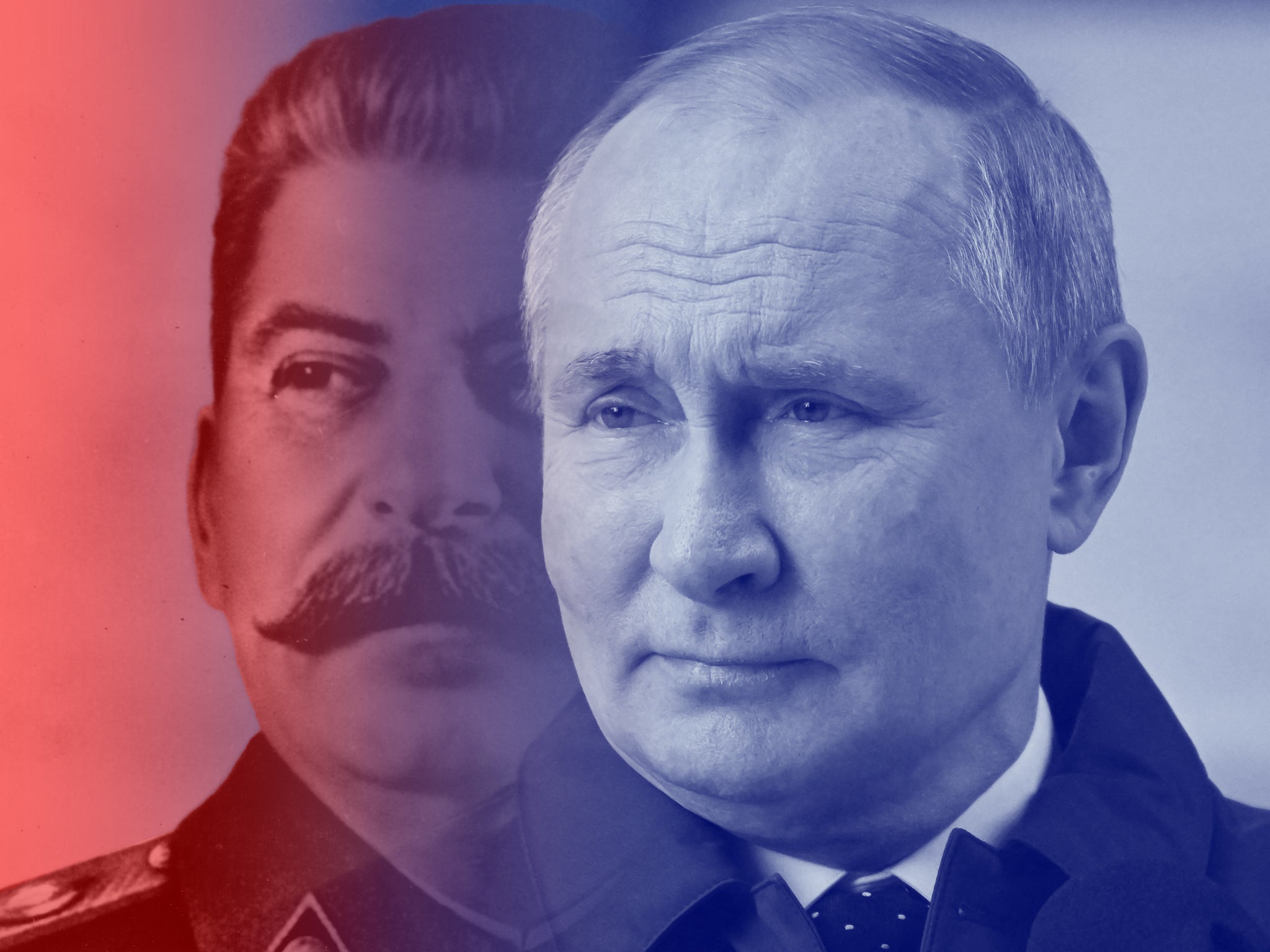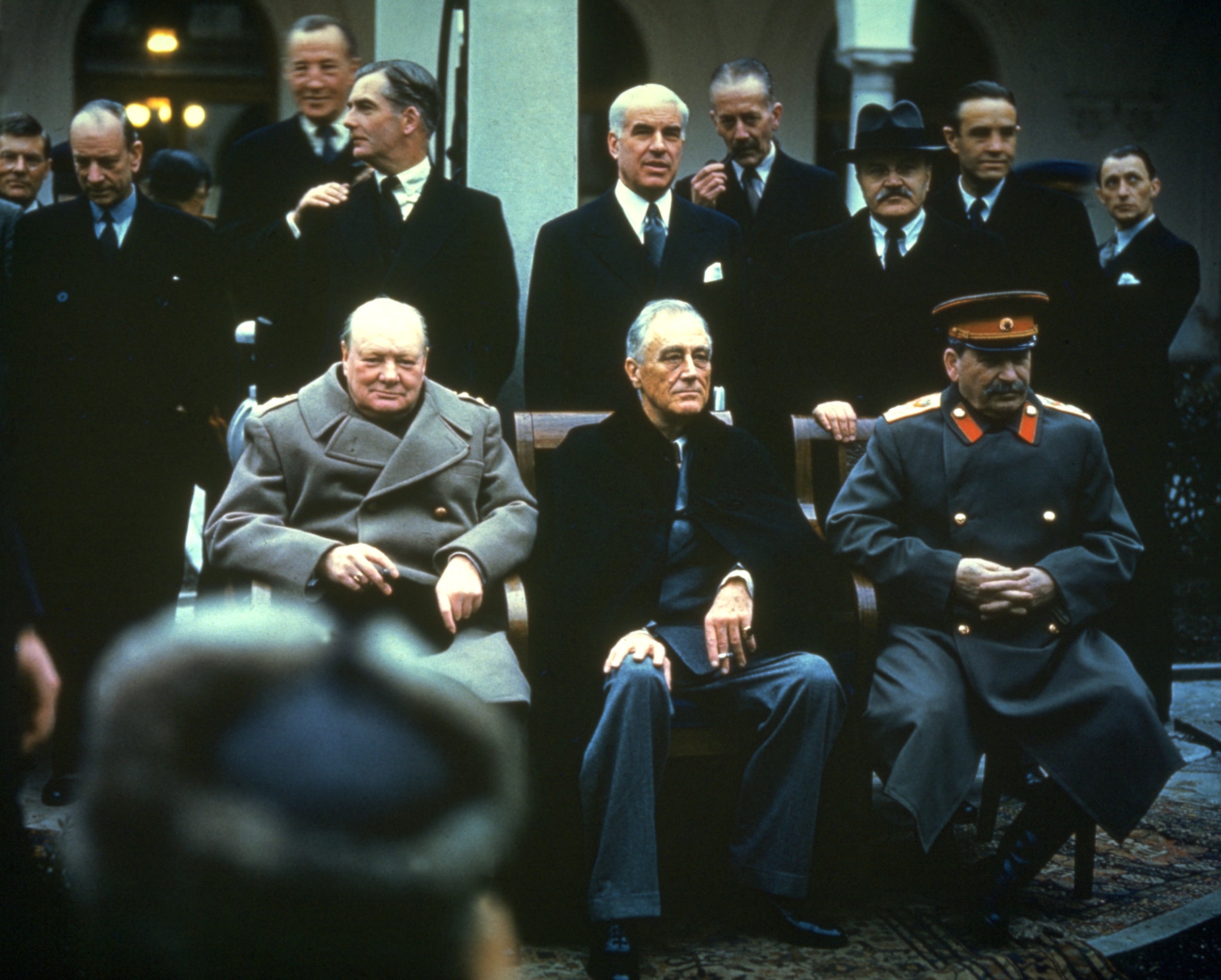How Putin’s disinformation mirrors classic Soviet propaganda from the Cold War
The US and the UK also did plenty of nefarious things during this period, 88-year-old Milton Leitenberg tells Andrew Buncombe


Your support helps us to tell the story
From reproductive rights to climate change to Big Tech, The Independent is on the ground when the story is developing. Whether it's investigating the financials of Elon Musk's pro-Trump PAC or producing our latest documentary, 'The A Word', which shines a light on the American women fighting for reproductive rights, we know how important it is to parse out the facts from the messaging.
At such a critical moment in US history, we need reporters on the ground. Your donation allows us to keep sending journalists to speak to both sides of the story.
The Independent is trusted by Americans across the entire political spectrum. And unlike many other quality news outlets, we choose not to lock Americans out of our reporting and analysis with paywalls. We believe quality journalism should be available to everyone, paid for by those who can afford it.
Your support makes all the difference.For much of his life, Milton Leitenberg has been studying, with a rare devotion, the propaganda tactics of the Soviet Union.
From “Operation Infektion”, launched in the 1980s to allege the US had invented HIV and Aids, to allegations made by Joseph Stalin’s Soviet Union in the early 1950s that Washington was using biological weapons in the Korean war, Leitenberg has documented the falsehoods in more than 40 books, journal articles and pamphlets.
Now, at the age of 88, he is turning his attention to the claims being made by Vladimir Putin over Ukraine, and finding there is a clear pattern.
“Disinformation for the Putin administration is not new,” he tells The Independent.
“It started at least as far as back as 2004, with the “colour” revolutions in Ukraine, and Georgia, and Tajikistan. Then you got the invasion of Georgia, and before that you had the poisoning of Alexander Litvinenko with polonium. After that you have the invasion of Ukraine, and the shooting down of the airliner, the Skripal poisoning in England, and then the Navalny poisoning.”
He adds: “Each is a case study. The pattern is the same. The Russian government does not supply or distribute one disinformation information story, but 12, 15 or 17. They’re all mutually contradictory.”
He says the disinformation response by Moscow to the July 2014 shooting down of Malaysia Airlines flight MH17, which was blamed by independent investigators on pro-Russian rebels in eastern Ukraine, and which killed almost 300 people, was “extraordinary”.
“They went to such lengths to concoct false satellite aircraft tracks – that is a little bit of work. That is not just verbal nonsense,” he adds.
In 1968, Leitenberg became the first American to work at the Stockholm International Peace Research Institute. He says that when he began his academic career, a number of his colleagues were keen to dismiss or ignore the significance of the Soviet Union’s use of disinformation, viewing it as “trivial garbage”.
But Leitenberg, currently a senior research associate at the Centre for International and Security Studies at the University of Maryland, says that disinformation has been a central tenet of both the Soviet and Russian states.
“It’s a structural, core element of their domestic and foreign policy. You cannot simply wave it off and say, ‘Well, that’s nonsense so we don’t have to pay attention to it,’” he says, adding: “If it was the Turkish government, or the Peruvian government, trotting out a piece of disinformation, maybe you could.”
In the 1980s, one of the disinformation campaigns launched by the KGB involved spreading false claims that a US-funded research project in Pakistan was sending “killer mosquitoes” into Afghanistan.
Leitenberg, who in 2012 co-authored a highly regarded book, The Soviet Biological Weapons Program: A History, wrote last year that “from 1949 until 1988, the Soviet Union conducted a nearly continuous campaign of false allegations of biological weapon use by the United States. In 1995, senior Russian military officials revived this pattern of false allegations, which continues to the present day.”
He says the widely debunked claims made by Putin and other officials over the US’s backing of biological weapons manufacture in Ukraine – claims that have been given additional oxygen in the US by conspiracy theorists such as Alex Jones of InfoWars, and Fox News’s Tucker Carlson – fit the same pattern.
Leitenberg acknowledges that throughout the period of the Cold War, the US and other western nations, such as the UK, engaged in widespread nefarious business – including formulating a coup against the elected leader of Iran, supporting the Indonesian military’s mass murder of political opponents in the 1960s, and backing Pinochet’s takeover of Chile.
In 2000, The New York Times revealed a classified history of the CIA’s 1953 operation in Iran to oust the prime minister and bolster Shah Mohammad Reza Pahlavi. It included planting articles and editorial cartoons in newspapers.
Reuters reported that the CIA had also used disinformation tactics in Latin America, using radio broadcasts under the name “Voice of Liberation” to help topple the government of Jacobo Arbenz in Guatemala in 1954.
After the Soviet invasion of Afghanistan in 1979, the CIA would annually plant false notices carrying the Soviet military seal in newspapers in Muslim countries, announcing invasion day “celebrations at Soviet embassies”, one former US intelligence officer told the news agency in a report published in 2002.
“Those notices just drove them crazy”, making it appear that the Soviets were crowing over the invasion, he says.
Leitenberg admits that the US did lots of “dodgy” things during this period. Yet he draws a technical, academic distinction between what he says were Soviet actions and the US’s “active measures”. “The point of these is precisely that they are covert, no one is supposed to know who is doing it,” he says.
“A disinformation campaign is the opposite. The actor – the government doing it – does so openly. Its officials make the statements, the state media carries the stories.”
Moscow’s claims about America’s alleged production of bioweapons in Ukraine started at the beginning of March, when Russia’s defence and foreign ministries claimed that, following the invasion, Russian troops had uncovered clean-up efforts by the Ukrainians, which they said were an attempt at “eradicating traces of the military-biological programme”.
Ukraine, the US and the UN have denied that there are biological weapons facilities in the country, but all have said that there are biological research units that contain a number of dangerous pathogens being researched. The World Heath Organisation has called for officials to destroy such substances.
Leitenberg says he can trace 10 distinct phases of the Soviet Union’s disinformation programme about US biological weapons alone.
“Starting only a few years after the end of World War II, in 1949, and lasting until 1988 under general secretary Mikhail Gorbachev, the USSR maintained a near continuous campaign of false allegations of biological weapon use by the United States. Never in history had any other country carried on such a campaign of false biological weapons allegations,” he wrote in a 2019 research paper.
He added: “After a pause of a few years between 1988 and 1995, senior Russian military officials began repeating the old false allegations. Russian officials amplified the campaign after the US government funded the transformation of former Soviet biological weapons facilities.”

Who is the intended audience for such disinformation?
“Both domestic and international,” says Leitenberg. “The Korean war [disinformation campaign], that may be the most important, was both for domestic and international audiences.
“Many millions of people paraded in west European capitals – in Paris, Berlin, in London – as well as in east European countries, about the ‘dirty American biological weapons’ used in the Korean war,” he says.
(In 1999, documents released by Russia showed that North Korea, China and the Soviet Union knew the claims the Russians were making were false.)
“The Aids campaign was not for domestic, that was for external. Obviously, they were trying to claim to Africa that the United States was trying to depopulate Africa. And statistics [show that] in some African countries, and in the African American community in the United States, that’s enormously influential.”
Leitenberg says the Aids campaign may have been the Soviet Union’s most successful disinformation project. He says that nine surveys carried out between 1988 and 2008 among African Americans in the US found that an average of 43 per cent believed the Aids virus was manmade.
He cites another survey, published in 2006, that found that 30 per cent of an African American sample responded with “True” to the statement: “Aids is an agent of genocide created by the US government to kill off minority populations.”
Leitenberg tells The Independent: “So that’s not trivial garbage.”

And what does he think are the chances of Putin’s latest disinformation campaign gathering traction?
He says he has no way of measuring whether people believe what Russia says, though he points to a massive operation, in various languages and often targeting specific communities.
He says that in early 2020, some Russian media started claiming that the US had manufactured the Covid virus, something that was highlighted at the time by the BBC’s news monitoring service. It reported in February 2020 that a major TV network, Channel One, had launched a regular slot devoted to coronavirus conspiracy theories on its main evening news programme, Vremya (meaning “time”).
“The style of the reporting is ambiguous, appearing to debunk the theories while leaving viewers with the impression that they contain a kernel of truth,” the BBC said.
As the pandemic bit deeper, Russian and Chinese officials were more plain-spoken.
In April 2020, Nikolai Patrushev, Russia’s Security Council secretary, told the Kommersant newspaper: “I suggest that you pay attention to the fact that biological laboratories under US control are growing by leaps and bounds all over the world. And – by a strange coincidence – mainly near the Russian and Chinese borders.”
Patrushev formerly served as director of the Russian Federal Security Service (FSB), the main successor to the KGB. In the interview, he was asked if the US was developing biological weapons in Europe. “We have good reason to believe that this is the case,” he said.
The false claims were also echoed by China.
China’s foreign ministry spokesperson, Lijian Zhao, wrote on Twitter: “The US bio-military activities are not transparent, safe or justified. In Ukraine alone, the US has set up 16 bio-labs. Why does the US need so many labs all over the world? What activities are carried out in those labs, including the one in Fort Detrick?”
Leitenberg says that this period saw a flood of disinformation from Russia.
“They put so many different stories there. That Soros did it, that Ukrainians did it, that we intended to depopulate the whole world, that Gates put bio-chips in the vaccines. You can’t imagine how many different stories,” he says.
“They just tried every possible way to say that the US made Covid, distributed Covid. And then they started this business with the 200 biological laboratories around the world.”
Leitenberg says he is a regular reader of the East StratCom Task Force webpage EU vs Disinfo, operated by the European Union, which works to counter disinformation and false claims.
The website says it was “established in 2015 to better forecast, address, and respond to the Russian Federation’s ongoing disinformation campaigns affecting the European Union, its member states, and countries in the shared neighbourhood”.
Leitenberg says he receives a weekly digest from the website.
“Oh boy, they have about 30,000 logged disinformation postings on all kinds of subjects, from over the last six or seven years I would say,” he adds.
“It can drive you crazy reading those things.”



Join our commenting forum
Join thought-provoking conversations, follow other Independent readers and see their replies
Comments